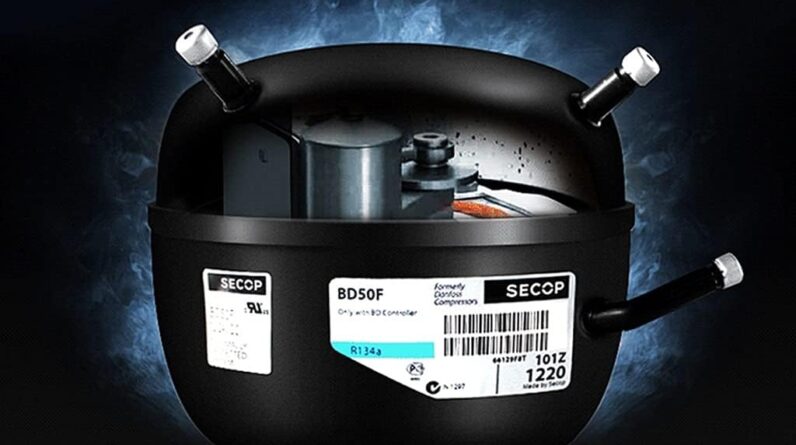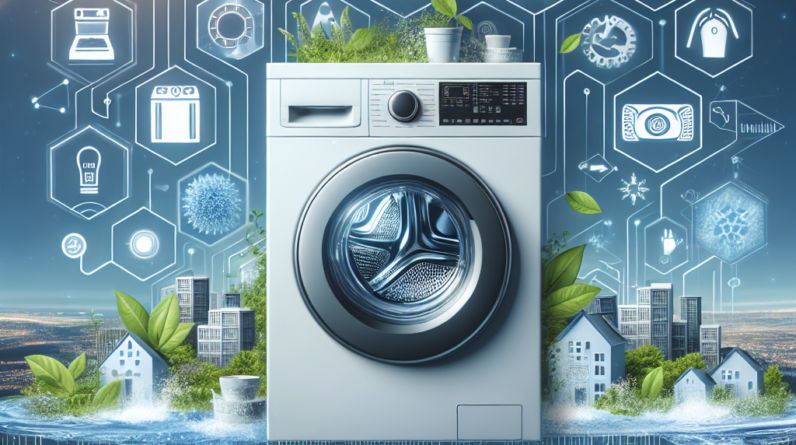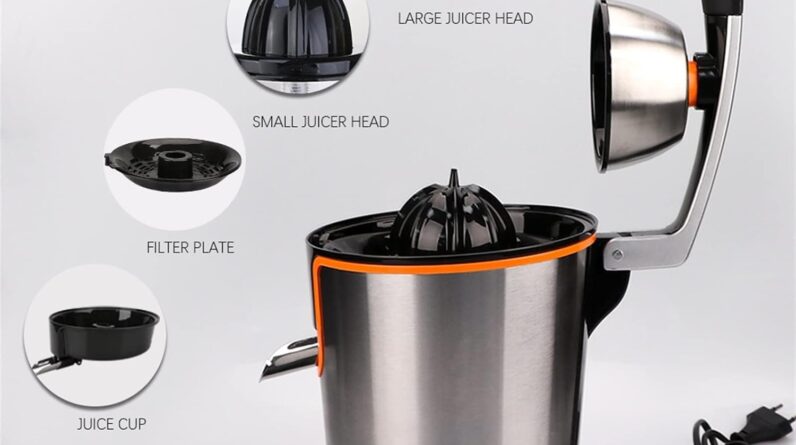
In this article, you will discover the most common dishwasher electrical problems and learn effective solutions to prevent and fix them. Whether it’s a frustrating circuit issue or a malfunctioning control panel, we’ve got you covered. By understanding the underlying causes and implementing the right solutions, you can ensure your dishwasher runs smoothly and efficiently, saving you time and money in the long run. So, let’s get started on troubleshooting and tackling those electrical concerns!
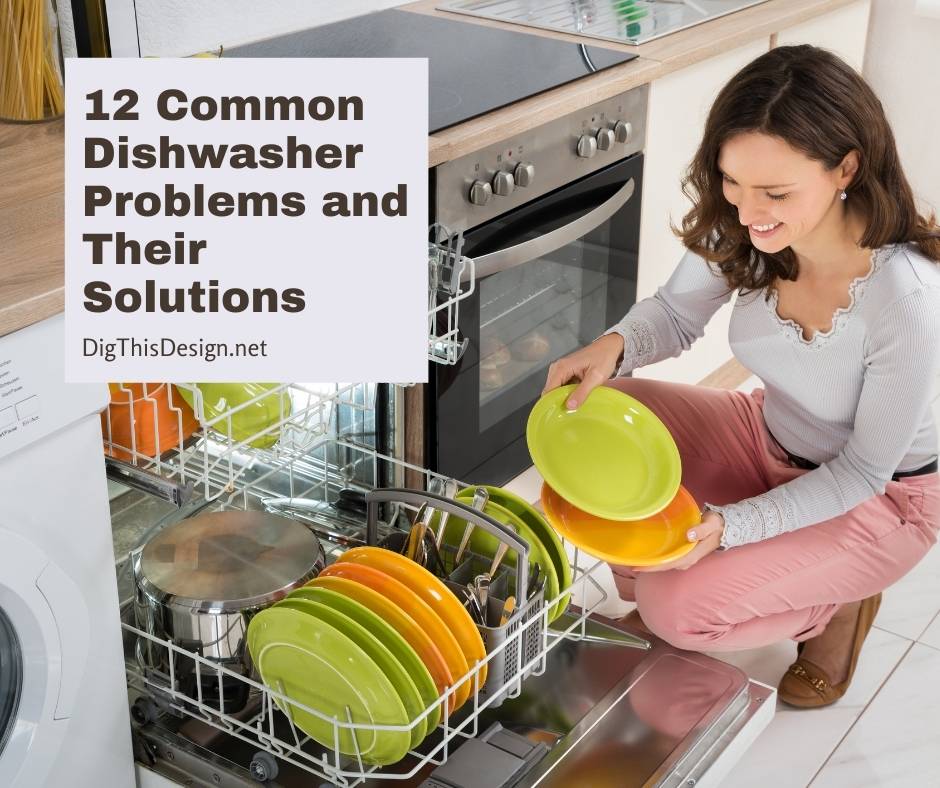
This image is property of digthisdesign.net.
Common Dishwasher Electrical Problems
Dishwashers have become an essential appliance in our kitchens, making our lives easier by handling the daunting task of washing dishes. However, like any other electrical appliance, dishwashers can encounter problems, especially in the electrical components. In this article, we will explore the most common dishwasher electrical problems and provide solutions to help you troubleshoot and resolve these issues efficiently.
Dishwasher Not Turning On
One frustrating situation is when your dishwasher refuses to turn on. Before assuming the worst, there are a few things you can check to identify and resolve the problem.
Check Power Connections
The first thing you should do is ensure that your dishwasher is properly connected to a power source. Check if the power cord is securely plugged into the electrical outlet and that there is no loose connection. Sometimes, a simple reconnection can solve the issue.
Inspect Power Cord
Inspect the power cord for any visible signs of damage, such as frayed wires, cuts, or burns. If you identify any damage, it is advisable to replace the power cord to ensure safe operation.
Test Outlet
To rule out any problems with the electrical outlet, try plugging in a different appliance or device to see if it receives power. If the outlet is not supplying electricity, you may need to reset the circuit breaker or contact a professional electrician to resolve the issue.
Examine Door Switch
The door switch is an important safety feature that ensures the dishwasher only starts when the door is securely closed. If the door switch is faulty or not making proper contact, it can prevent the dishwasher from turning on. Inspect the door switch and, if necessary, replace it to restore functionality.
Check Control Panel
In some cases, the control panel may be a culprit for the dishwasher not turning on. Examine the control panel for any visible damage or loose connections. If you notice any issues, consider replacing the control panel to resolve the problem effectively.
Dishwasher Not Filling with Water
Another common dishwasher problem is when it fails to fill with water. A dishwasher unable to fill properly may result in ineffective cleaning or may not function at all. Let’s explore the possible causes and solutions for this issue.
Inspect Water Supply Line
Start by checking the water supply line connected to the dishwasher. Ensure it is not kinked, twisted, or obstructed in any way. Straighten out any bends or folds, and clear any blockages that may be hindering the water flow.
Check Inlet Valve
The inlet valve controls the flow of water into the dishwasher. If the valve is faulty or clogged, it may prevent the dishwasher from filling with water. Inspect the inlet valve for any leaks, cracks, or blockages. If necessary, clean or replace the inlet valve to restore the normal water flow.
Examine Float Switch
The float switch is a safety mechanism that prevents overfilling of water in the dishwasher. If the float switch gets stuck in the raised position, it can signal the dishwasher to stop filling. Check the float switch assembly, ensuring it moves freely and is not obstructed. Clean or replace the float switch if necessary to ensure proper functionality.
Test Water Level Sensor
The water level sensor detects the water level inside the dishwasher and signals when it should stop filling. If the sensor malfunctions, it may prevent the dishwasher from filling correctly. Test the water level sensor using a multimeter and replace it if it fails to provide accurate readings.
Check Timer or Control Board
If all the above steps do not resolve the issue, the problem may lie with the dishwasher’s timer or control board. These components control various functions, including water filling. If they are faulty, it can disrupt the filling process. Consult a professional technician to diagnose and repair any problems with the timer or control board.
Dishwasher Not Draining
A dishwasher that fails to drain properly can lead to stagnant water, unpleasant odors, and unsanitary conditions. If you encounter this problem, follow these steps to identify and fix the issue.
Check Drain Hose
Begin by checking the drain hose for any kinks, clogs, or obstructions that may be preventing the water from flowing out of the dishwasher. Clear any debris or blockages and ensure the hose is properly connected to the dishwasher and the drain system.
Inspect Drain Pump
The drain pump is responsible for removing water from the dishwasher. If the pump is clogged, damaged, or not functioning correctly, it can hinder the draining process. Inspect the drain pump for any signs of debris, damage, or motor failure. Clean or replace the drain pump as necessary to promote proper drainage.
Clear Clogs in Drain Line
Sometimes, the drain line may become clogged with food particles, grease, or other debris. Use a plumber’s snake or a wire hanger to gently remove any clogs that may be obstructing the drain line. Take care not to cause any damage to the line while clearing the blockage.
Examine Check Valve
The check valve prevents water from flowing back into the dishwasher after it has drained. If the check valve is stuck or not working correctly, it can cause drainage problems. Inspect the check valve for any blockages, debris, or damage. Clean, repair, or replace the check valve to ensure proper drainage.
Test Drain Solenoid
The drain solenoid controls the opening and closing of the drain valve. If the solenoid is defective, it can hinder the drainage process. Test the drain solenoid using a multimeter and replace it if it is not functioning properly.
Dishwasher Not Running or Stops Mid-Cycle
A dishwasher that fails to run or stops mid-cycle can be a significant inconvenience. Here are some troubleshooting steps to resolve this issue effectively.
Check Door Latch
A faulty door latch can prevent the dishwasher from running or cause it to stop mid-cycle. Ensure the door is closing properly and that the latch is securely engaging. Clean any dirt or debris around the latch and test the dishwasher to see if the problem persists.
Inspect Timer or Control Board
If the dishwasher still does not run or stops mid-cycle, the timer or control board may be at fault. The timer controls the duration of the dishwasher’s cycles, while the control board manages various functions. Consult a professional technician to diagnose and repair any issues with these components.
Examine Motor
The motor is responsible for powering the dishwasher’s various functions, such as spraying water, spinning the spray arms, and operating the pump. If the motor is malfunctioning, it can cause the dishwasher to stop running. Inspect the motor for any visible signs of damage or motor failure. Replace the motor if necessary to restore proper functionality.
Test Thermal Fuse
The thermal fuse is a safety device that shuts off power to the dishwasher if it overheats. If the thermal fuse is blown or faulty, it can cause the dishwasher to stop running. Test the thermal fuse using a multimeter and replace it if it is defective.
Check Circulation Pump
The circulation pump is responsible for spraying water onto the dishes during the wash cycle. If the pump is clogged, damaged, or not working correctly, it can cause the dishwasher to stop mid-cycle. Inspect the circulation pump and clean or replace it if necessary.
Dishwasher Not Cleaning Dishes Properly
A dishwasher’s primary function is to clean dishes effectively. However, if your dishwasher is not cleaning dishes properly, it can be frustrating and result in unsanitary conditions. Let’s explore the possible causes and solutions for this problem.
Check Spray Arms
The spray arms distribute water and detergent throughout the dishwasher to clean the dishes. If the spray arms are clogged, damaged, or not spinning correctly, it can hinder the cleaning process. Remove the spray arms and clear any blockages or debris. Replace the spray arms if they are damaged or not functioning properly.
Inspect Filters
Dishwashers have filters that help trap food particles and prevent them from recirculating onto the dishes. If the filters are clogged or dirty, it can impede proper cleaning. Remove and clean the filters thoroughly to ensure they are clear of any debris or residue.
Test Water Temperature
Water temperature plays a crucial role in effective dishwashing. If the water is not hot enough, it may not dissolve the detergent or remove food particles effectively. Check the water temperature using a thermometer and adjust the dishwasher’s settings if necessary. If the water heater is not functioning correctly, consult a professional to repair or replace it.
Examine Detergent Dispenser
The detergent dispenser releases the detergent at the appropriate time during the wash cycle. If the dispenser is not working correctly, it can prevent the dishwasher from using the detergent effectively. Inspect the detergent dispenser for any blockages, damage, or malfunction. Clean or replace the dispenser if necessary.
Check Wash Impeller
The wash impeller is responsible for forcing water through the spray arms to clean the dishes thoroughly. If the wash impeller is broken or not spinning correctly, it can hinder the cleaning process. Inspect the wash impeller and replace it if it is damaged or not functioning properly.
Dishwasher Making Strange Noises
If your dishwasher is making unusual noises, it may be indicative of underlying problems. Identifying and addressing these issues promptly can prevent further damage and ensure the dishwasher operates smoothly.
Inspect Wash Motor Bearings
The wash motor bearings can wear out over time, leading to a loud grinding or squealing noise. If you notice such noises coming from your dishwasher, inspect the wash motor bearings for damage or excessive wear. Replace the bearings if necessary to eliminate the noise.
Check Spray Arm Bearings
The spray arm bearings allow the spray arms to spin freely. If the bearings are worn or damaged, they can produce a rattling or clanking noise. Inspect the spray arm bearings for any signs of wear or damage. Replace the bearings if needed to eliminate the noise.
Examine Circulation Pump Motor
The circulation pump motor powers the spray arms and can make unusual sounds if it is malfunctioning. If you hear strange noises coming from your dishwasher, inspect the circulation pump motor for any visible damage or motor failure. Replace the motor if necessary to eliminate the noise.
Test Wash Impeller
A faulty wash impeller can also be a culprit for strange noises. Inspect the wash impeller for any damage, wear, or blockages. Clean or replace the wash impeller as necessary to eliminate the noise.
Check Drain Pump
The drain pump can cause strange noises if it is clogged or damaged. Inspect the drain pump for any obstructions, debris, or signs of motor failure. Clean or replace the drain pump as needed to eliminate the noise.
Dishwasher Door Not Latching
When your dishwasher door fails to latch properly, it can prevent the dishwasher from running or cause it to stop mid-cycle. Addressing this issue is essential to ensure proper operation and prevent further damage.
Check Door Latch Assembly
Inspect the door latch assembly for any visible damage or misalignment. If the latch is broken, worn, or not engaging properly, it can prevent the door from latching securely. Replace the door latch assembly if necessary to achieve a proper latch.
Inspect Door Switch
The door switch is a safety feature that signals to the dishwasher that the door is securely closed. If the door switch is faulty or not making proper contact, it can prevent the door from latching. Inspect the door switch for any visible damage or misalignment. Replace the door switch if necessary to ensure proper operation.
Examine Door Seal
The door seal creates a waterproof seal between the dishwasher door and the tub. If the door seal is damaged, cracked, or worn, it can prevent the door from latching properly. Inspect the door seal for any signs of damage and replace it if needed to achieve a proper latch.
Test Door Hinges
The door hinges can become loose or misaligned over time, preventing the door from latching properly. Check the door hinges for any looseness, damage, or misalignment. Tighten the hinges or adjust them as needed to achieve a proper latch.
Check Control Panel
If the above steps do not resolve the issue, inspect the control panel for any visible damage or loose connections. Sometimes, a faulty control panel can prevent the door from latching. Replace the control panel if necessary to restore proper functionality.
Dishwasher Overheating
When a dishwasher overheats, it can cause damage to the electrical components and disrupt its functionality. Addressing this problem promptly is crucial to prevent further problems and ensure safe operation.
Inspect Heating Element
The heating element is responsible for heating the water during the wash and rinse cycles. If the heating element malfunctions, it can cause the dishwasher to overheat. Inspect the heating element for any visible damage or signs of failure. Replace the heating element if necessary to prevent overheating.
Check High Limit Thermostat
The high limit thermostat is a safety device that shuts off power to the heating element if it reaches a specific temperature. If the high limit thermostat is faulty or not functioning correctly, it can cause the dishwasher to overheat. Inspect the high limit thermostat and test it using a multimeter if needed. Replace the thermostat if it is defective to ensure safe operation.
Examine Control Board
The control board manages and coordinates various functions of the dishwasher, including temperature regulation. If the control board is faulty or damaged, it may cause the dishwasher to overheat. Inspect the control board for any visible damage or signs of malfunction. Replace the control board if necessary to prevent overheating.
Test Temperature Sensor
The temperature sensor monitors the temperature inside the dishwasher and signals the control board to regulate the heating process. If the temperature sensor is not providing accurate readings, it can lead to overheating. Test the temperature sensor using a multimeter and replace it if it is defective.
Check Cooling Fan
The cooling fan helps dissipate heat and prevents the dishwasher from overheating. If the cooling fan is not functioning properly, it can cause the dishwasher to overheat. Inspect the cooling fan for any obstructions, damage, or signs of motor failure. Clean or replace the cooling fan as necessary to ensure proper cooling.
Dishwasher Tripping Circuit Breaker
A dishwasher tripping the circuit breaker can be a safety concern and indicates an underlying electrical issue. Here are some steps to identify and resolve this problem.
Inspect Power Cord
Inspect the power cord for any visible signs of damage, such as frayed wires or exposed conductors. A damaged power cord can cause a short circuit and trip the circuit breaker. Replace the power cord if it is damaged to ensure safe operation.
Check Outlet
Ensure that the dishwasher is plugged into a dedicated circuit with the correct amperage rating. Overloading the circuit can cause the dishwasher to trip the breaker. If the circuit breaker consistently trips, consult a professional electrician to determine if any electrical upgrades are necessary.
Examine Heating Element
A faulty or malfunctioning heating element can draw excessive electrical current, causing the circuit breaker to trip. Inspect the heating element for any visible damage or signs of failure. Replace the heating element if necessary to prevent further tripping.
Test Motor
A motor that is drawing too much electrical current can also trip the circuit breaker. Inspect the motor for any visible signs of damage or motor failure. Replace the motor if needed to prevent further tripping.
Check Control Board
Just like with other electrical problems, a faulty control board can cause the dishwasher to trip the circuit breaker. Inspect the control board for any visible damage or loose connections. Replace the control board if necessary to ensure safe and uninterrupted operation.
Dishwasher Control Panel Not Working
If your dishwasher’s control panel is unresponsive or not functioning properly, it can be frustrating and prevent the dishwasher from operating. Here are some steps to troubleshoot and resolve this issue.
Inspect Control Panel Buttons
Check the control panel buttons for any visible damage, such as cracks or wear. Clean the panel thoroughly to remove any dirt or residue that may be interfering with the button’s functionality. If the buttons are damaged or not responding, consider replacing the control panel.
Check Control Board
The control board manages and coordinates the functions of the dishwasher, including the control panel. A faulty control board can cause the control panel to stop working. Inspect the control board for any visible damage or loose connections. Replace the control board if necessary to restore proper functionality.
Examine User Interface Control
The user interface control communicates with the control board and allows you to select different settings on the dishwasher. If the user interface control is faulty, it can cause the control panel to stop working. Inspect the user interface control for any visible damage or signs of malfunction. Replace the user interface control if needed to restore functionality.
Test Membrane Switch
The membrane switch is a thin layer on the control panel that registers commands when you press the buttons. If the membrane switch is not functioning correctly, it can prevent the control panel from working. Test the membrane switch using a multimeter and replace it if it is not responding properly.
Check Keypad Ribbon Cable
The keypad ribbon cable connects the control panel to the control board and allows for communication between the two. If the keypad ribbon cable is damaged or not making proper contact, it can cause the control panel to malfunction. Inspect the keypad ribbon cable for any visible damage or loose connections. Replace the keypad ribbon cable if necessary to restore proper functionality.
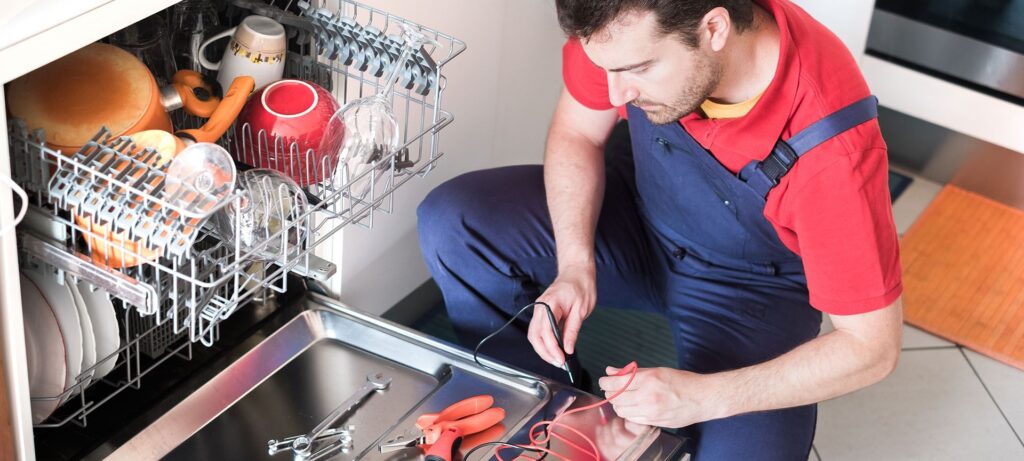
This image is property of primeappliancerepairs.com.
How to prevent and fix dishwasher electrical problems?
Preventing dishwasher electrical problems can save you time, money, and frustration in the long run. Here are some tips to help you maintain a well-functioning dishwasher:
-
Proper Installation: Ensure that your dishwasher is installed correctly and according to the manufacturer’s guidelines. Improper installation can lead to electrical problems down the line.
-
Regular Maintenance: Clean the dishwasher regularly, including the filters, spray arms, and interior surfaces. This helps prevent clogs and ensure optimal performance.
-
Load Dishes Properly: Overloading the dishwasher can strain the motor and other components, leading to electrical issues. Follow the manufacturer’s instructions for loading dishes to prevent damage.
-
Use Appropriate Detergent: Using the wrong detergent can result in residue buildup and clogs within the dishwasher. Use the recommended detergent for your dishwasher to ensure proper cleaning and prevent electrical problems.
-
Use Hot Water: Run your faucet until the water is hot before starting the dishwasher. Hot water aids in effective cleaning and prevents clogs caused by grease and food residue.
If despite taking preventive measures, you encounter dishwasher electrical problems, here are some steps you can take to fix them:
-
Troubleshoot: Use the troubleshooting steps provided in this article to identify and resolve the specific problem you are facing.
-
Consult the Manual: Refer to the dishwasher’s manual for specific troubleshooting tips and maintenance guidelines. The manufacturer’s recommendations can provide useful information for resolving common issues.
-
Seek Professional Help: If you are unable to resolve the problem on your own or do not feel comfortable working with electrical components, it is best to seek the assistance of a professional technician. They have the expertise and tools to diagnose and repair complex electrical problems.
By following these preventive measures and promptly addressing any dishwasher electrical problems, you can extend the lifespan of your dishwasher and ensure clean and efficient dishwashing for years to come.

This image is property of assets.searshomeservices.com.


